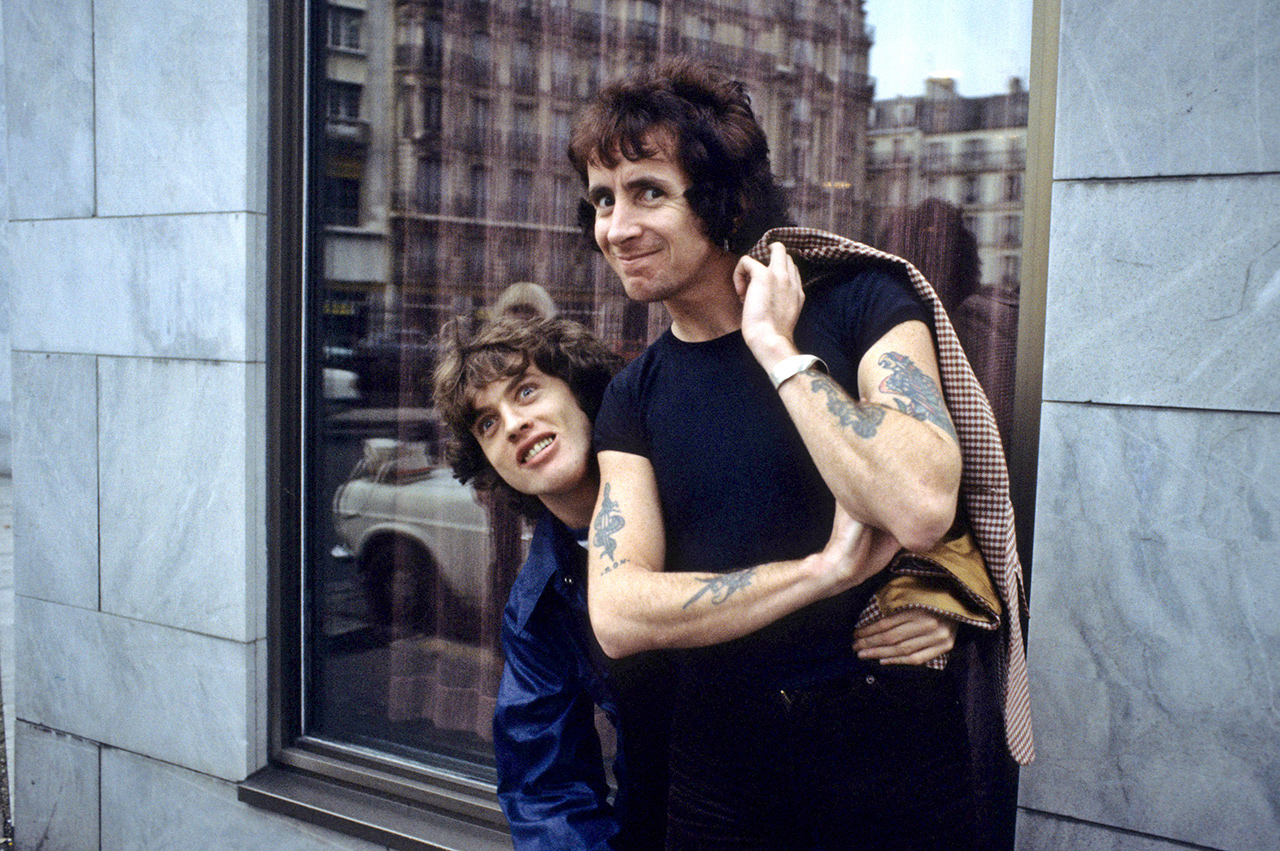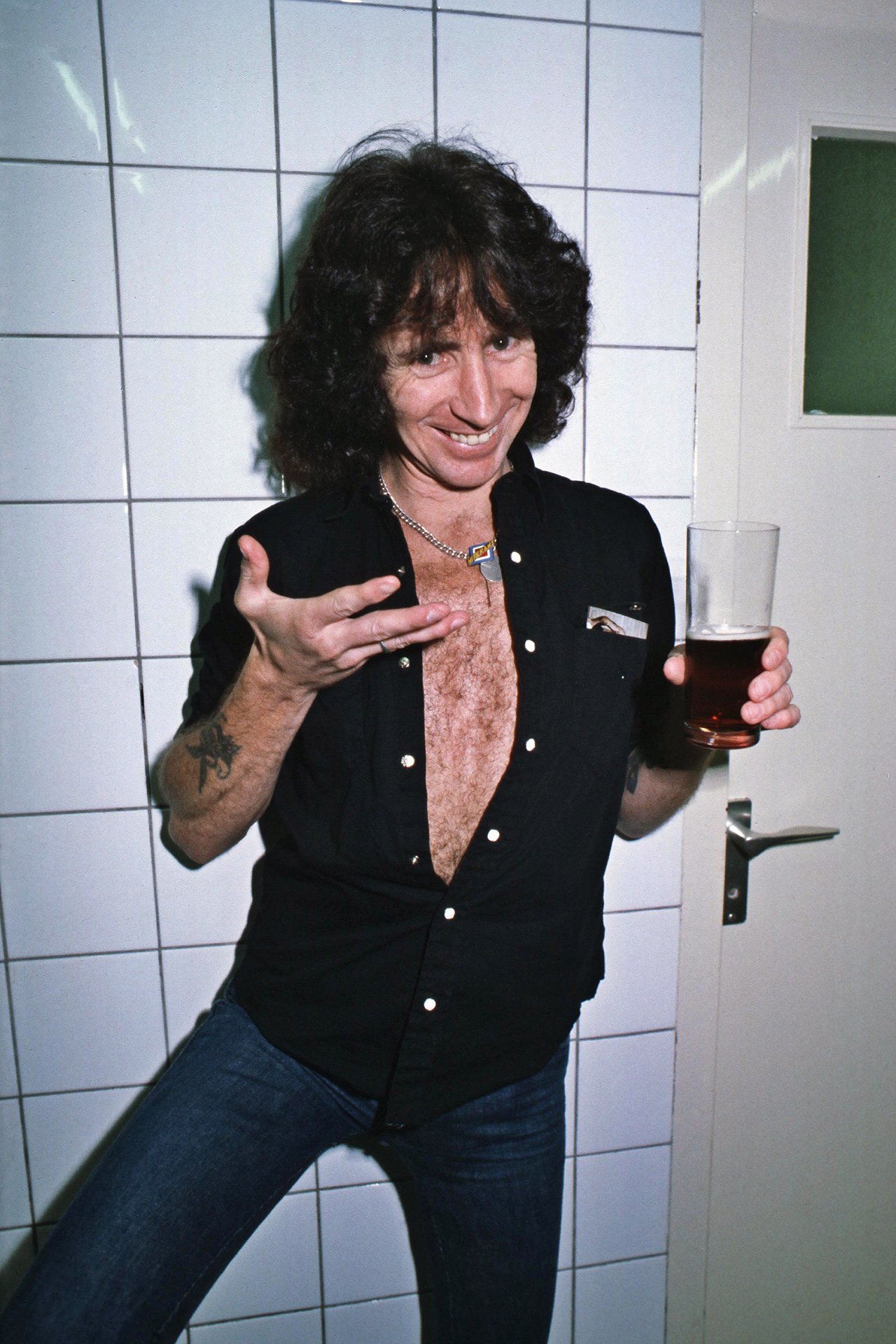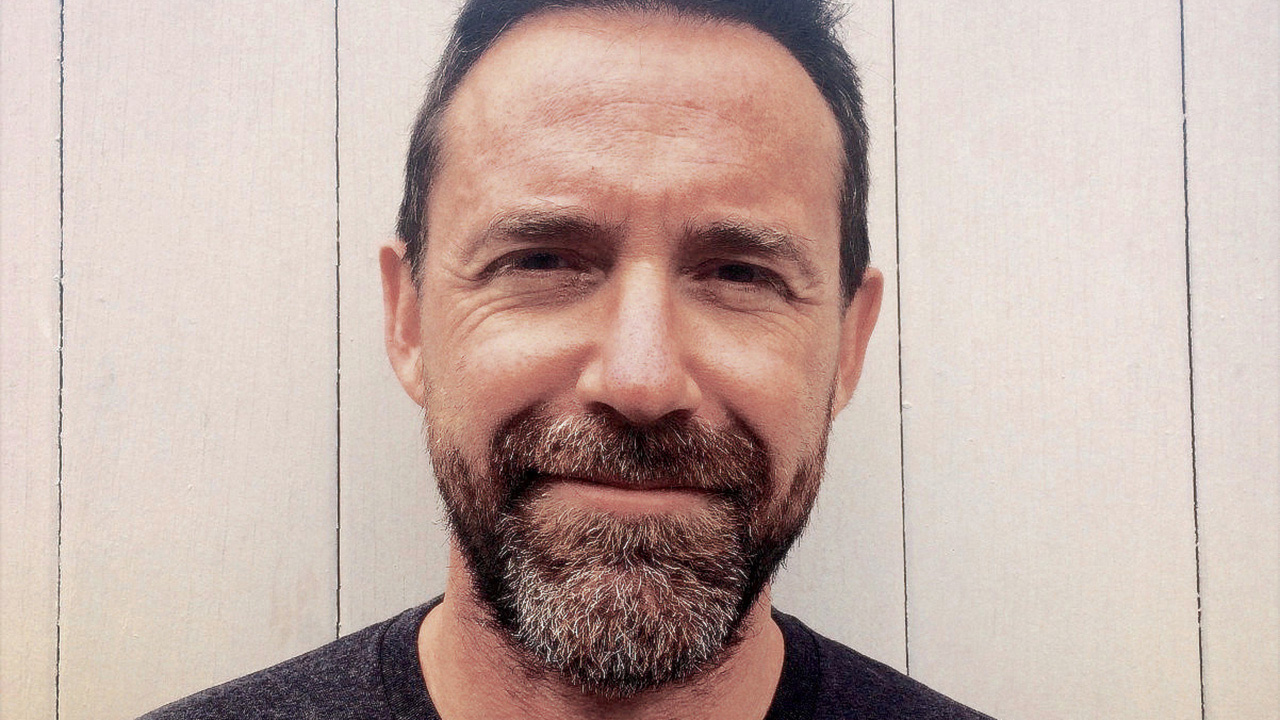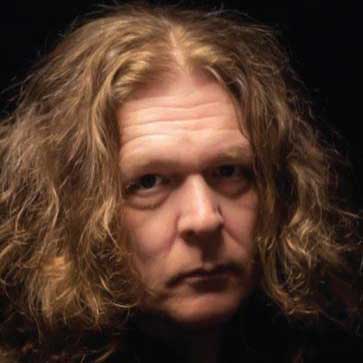Bon Scott’s prowess as a lyricist was such that in his saucier moments he could wield a double entendre with a flair lascivious enough to make Mae West blush and Austin Powers bow down in reverence. With this in mind, we hope you’ll allow Classic Rock the indulgence of blowing its own horn; specifically, the horn of Geoff Barton, whose Classic Rock feature focused on the night and mystery surrounding Bon Scott’s death on the night of February 19, 1980.
Geoff raised new questions as to when Bon’s body was eventually discovered in Alaistair Kinnear’s car, and in relation to the identity and whereabouts of Kinnear himself, the combined effect of which was to “…put a whole new angle on Bon’s death”. That’s the opinion, of Jesse Fink, author of The Youngs: The Brothers Who Built AC/DC (2014), and the man behind the brand new Bon Scott biography.
As he worked on the book over the course of the next few years, Jesse revealed that he was on the trail of two very significant witnesses to Bon’s last days in London during February 1980, and was also attempting to take a closer look at the circumstances surrounding his death. The book, Bon: The Last Highway, with its subtitle ‘The Untold Story Of Bon Scott And AC/DC’s Back In Black’ was intriguing in itself, but the press release also teased with the promise of new revelations regarding his life.
Having written about the Young brothers and AC/DC in your previous book, The Youngs, was an in-depth look at Bon’s life the logical next step?
Writing a proper biography of Bon just seemed to be a good thing to do, the kind of big project I’d always wanted to tackle. The Youngs was a doddle compared to the work that went into Bon: The Last Highway. There’s so much worldwide interest in Bon’s life, and that grows with each passing year.
Beyond the tragedy of his death and the triumph AC/DC had with Back In Black, there isn’t a whole lot of meaningful info about Bon in those final years of his life, 1977–80, which is the focus, specifically his time in America. So I wanted to fill in that blank space in his story.
You don’t claim to have written the definitive biography, but you say you wanted to get to the man behind the myth. Do you think the real Bon had got lost, and that the party-animal, girls-and-grog caricature had taken over?
Yes, very much so, to a large degree. The mythologising of Bon has become completely ridiculous. It’s out of control. Bon: The Last Highway tells a very different story to all the other books out there on Bon and AC/DC, and I wanted the word ‘untold’ on the cover to actually mean something. It is untold. I wasn’t going to just rehash what had already been written.
As I got to know the women in Bon’s life and his friends during that 1977–80 period, what emerged was a picture of the man who was directly at odds with everything people think they know about him. I think Bon was locked in a kind of conflict with himself. He didn’t quite know who he was any more; what part of him was real, what part of him was performance. That disconnect between the real Bon and the cartoon Bon would have contributed to the drinking and the drugging, which got out of control towards the end. What happened in London in February 1980 wasn’t a freak, isolated event. A pattern of self-destructive behaviour had developed well before then.
You spoke to an extensive cast of characters who knew Bon, from fellow musicians he met on AC/DC’s never-ending tours, to close friends and lovers who spent time with him away from the spotlight.
I was really very blessed to get to talk to guys like Mick Jones from Foreigner, Michael Anthony from Van Halen, Pete Way, Paul Raymond and Paul Chapman from UFO, Derek St Holmes, Bun E. Carlos, and many other musicians who had played on the road or on festival bills with Bon in America between 1977 and 1979. I tried to interview as many relevant performers from the late-1970s period as I could. That era was the crucible of what we know today as classic rock. I think the heart of the story is his relationships with the women he loved – Silver Smith, Holly X and Pattee Bishop – and his friendship with Roy Allen from Texas.
What did you learn about the real Bon, the different aspects of his life and character?
Silver and Holly in particular were tremendously helpful in revealing sides to his character that people wouldn’t know about. Silver spoke about the selfishness, recklessness and destructiveness that made having a long-term relationship with him impossible; Holly about his guilt and shame over his alcoholism. Bon was a vulnerable person in a lot of ways, more complex and sensitive than people might think.
Did anything about him surprise you?
That he was prepared to walk away from AC/DC for the sake of his health.
How did that affect how you think of him now?
Well, I hugely admire him for that. Even though he never followed through with it, he was thinking about it, right when AC/DC had finally broken in America with Highway To Hell. That says a lot about his character.
The overall picture of Bon the book gives is resoundingly positive, with his darker side linked to drug and alcohol abuse. And as his friend Roy Allen said, he had the foresight to realise he needed help. Rehab as such didn’t exist at that time, but Bon asked if he could go to Roy’s place to dry out. Many of Bon’s friends and his bandmates Malcolm Young and Phil Rudd would later realise they had problems and seek help, some of them citing his death as a wake-up call, but Bon never got the chance to do that. Was there a sense that he had nowhere to turn?
I think in all sorts of ways Bon was trapped at the end of 1979: trapped in the band, trapped in life on road, trapped by his addictions, trapped in this persona that he had created as lead singer of AC/DC. He didn’t know where to turn or what to do next. The decision he made to just continue on as normal was ultimately the wrong one. If he’d got help, he might still be here today.

Drug and alcohol abuse were part of everyday life in the world Bon inhabited, in both his professional and personal life, but, as many other musicians have testified over the years, that was typical of the era. Without making excuses, the depth of information we have today with regard to addiction just wasn’t there in the seventies. Do you feel that it’s important to view Bon’s drinking and drug use in the context of that time?
You’re right. It was typical of the era, and that’s why when I was in New York I went to meet Mick Jones, who described himself to me as still being an alcoholic and a drug addict, “one drink away from destruction, one drug away”. There were surprising parallels between Bon and Mick, but Mick got help when he needed it and Bon didn’t. I found that sit-down interview with Mick really illuminating on the nature of fame and addiction.
I don’t think you can retrospectively judge Bon for what he was doing. Nor do I think you can necessarily make light of it, either, as many people do, like those fans who pour alcohol on or leave whisky bottles at his grave marker as their way of paying ‘respect’ to him. His drinking and his drugging killed him. If you want to respect Bon, get someone who needs help into rehab; save a friend’s life. Don’t leave booze at Bon’s grave.
In the last year of his life, there’s a definite sense of his drinking catching up with him, to the extent that it affected his on-stage performance on occasion. His close friend Roy Allen, a fellow recovering alcoholic, told you that Bon “loved his job until he got too sick. I think it says so much about him… being able to do what he did in spite of being so sick.” How did this affect his relationship with the Youngs?
Bon knew he didn’t have any special protection from being fired, and at the end of the day AC/DC was a business for the Youngs, with no room for sentiment. He’d put in some ordinary shows, forgotten lyrics, performed drunk. I think he was very cognisant of the precariousness of his position, and his relationship with Malcolm had become strained because of his drinking. I don’t believe he and the Youngs were close, no matter what anyone says. The Youngs were “an exclusive society of two”, as Silver described it. Bon had a separate life to the band.
Our readers will remember Geoff Barton’s article, which took a deeper look into the circumstances surrounding Bon’s death. You examine, almost forensically, a wide range of accounts from various sources regarding what may have happened, and at the end of the book you set out two theoretical time-lines for the last hours of Bon’s life. Your investigation revealed new information, perhaps most significantly with regard to what happened between Bon and Alistair Kinnear leaving a gig at The Music Machine, and Bon being found dead in the car outside Kinnear’s flat in East Dulwich the following day.
Geoff Barton certainly put a whole new angle on Bon’s death by interviewing UFO pair Paul Chapman and Pete Way back in 2005. [Bon biographer] Clinton Walker subsequently dismissed their stories as the “garbled and conflicting accounts of these recovering addicts” in the updated version of his book Highway To Hell and paid them no heed, when, in his position as a Bon Scott biographer, he should have been interested in finding out more.
I spoke to both Chapman and Way for many hours, going over the sequence of events that Barton had laid out in his piece for Classic Rock. And what I discovered, the deeper I looked into it, was that Chapman and Way’s stories actually held up when it came to important, substantive details. Silver Smith and Joe Fury didn’t deny that Chapman was phoned with the news Bon was dead, and that Chapman then called Way to get a number for AC/DC.
The difficult part was reconciling Chapman and Way’s stories with the accounts of Joe, Silver and Alistair Kinnear, all of whom had their own versions of what took place between when Bon decided he was leaving his flat in Westminster on the night of 18 February 1980, to when he was pronounced dead on arrival at King’s College Hospital the following evening. The time-lines were all over the place.
So the truth of what happened to Bon was in there somewhere, lost in this jumble of conflicting details and contradictions. It was a long, very involved process trying to make sense of all.
Then there was a breakthrough in my own investigation, involving Peter Perrett’s wife, Zena Kakoulli, who said she went with Bon and Alistair to East Dulwich after they’d left The Music Machine – she was inside Alistair’s apartment when Bon was in the car outside – and an eyewitness at the club who saw Bon “stoned” on what this person clearly believed was heroin. That cast a whole new light on my interpretation of events. Clive Edwards, the drummer of Wild Horses, also told me Silver was at Jimmy Bain’s house snorting heroin when she got the call on the evening of the 19th to come to the hospital; not at home, as she claimed. In the end, I think I provided enough new information to show that Bon died from heroin and not from alcohol poisoning. The police investigation and the coroner’s inquest were substandard.

You tracked down Silver Smith, and you also managed to find the mysterious Joe Fury, previously thought to be a possible alias for Alistair Kinnear.
Silver was a recluse and she died in December 2016, after we’d done months of interviews. So I was fortunate to be able to speak to her. And I have James (J.P.) Quinton, a young writer in Australia who’d written a novel about Bon, to thank for that. Hopefully this book shows the side of her personality to which Bon felt drawn: she was attractive, smart, sophisticated and enjoyed friendships with a lot of famous musicians, among them Ron Wood and Phil Lynott. She used heroin and admitted as much, but she wasn’t the unhinged, smack-addicted witch she’s made out to be by a lot of AC/DC fans.
Joe was really hard to find and I never thought I’d locate him, but when we finally spoke he was forthcoming and helpful. He had no idea people had been going around saying that he was Alistair Kinnear. He didn’t even know Alistair was dead. He also rejected Paul Chapman’s version of events [in which he claimed Joe was with him at Chapman’s flat, waiting for Bon to arrive with some heroin] and was quite angry about it.
I obtained Alistair’s death certificate from his son, Daniel, and I found plenty of biographical information about Alistair to prove beyond doubt that he was a real living person. That particular conspiracy theory about Joe being Alistair is utter nonsense.
Silver states unequivocally that the night he died, Bon went out to celebrate the fact that he’d finished the lyrics for the Back In Black album.
She does. And when you marry that startling revelation with the information I obtained from Holly X in Miami, about the background to You Shook Me All Night Long and Silver’s separate claim that she saw the words ‘She told me to come but I was already there’ in a letter Bon had written to one of his mates, the long-standing allegation that Bon contributed uncredited lyrics to Back In Black seems very legitimate. I believe he did; I have no doubt he did.
Although Bon often referred to himself as an old man, and his bandmates teased him about it, do you feel that the tragedy of his death was heightened by the fact that he was still a relatively young man when he died – only thirty-three?
Absolutely. I think many people tend to forget just how young he was, even though he did look a lot older. I didn’t have clarity on my own life and what I wanted from it till my late thirties. So we have to cut Bon some slack for making the mistakes he made. We all screw up at one point or another, it’s just that same of us go on to live and learn from those mistakes. Bon paid the ultimate price. His “destructive side”, as Silver put it, got him in the end.
Bon: The Last Highway by Jesse Fink is out now through Black & White Publishing.
The last highway: the untold story of Bon Scott's death
Exclusive: AC/DC's Bon Scott died from drug overdose, claims new book

